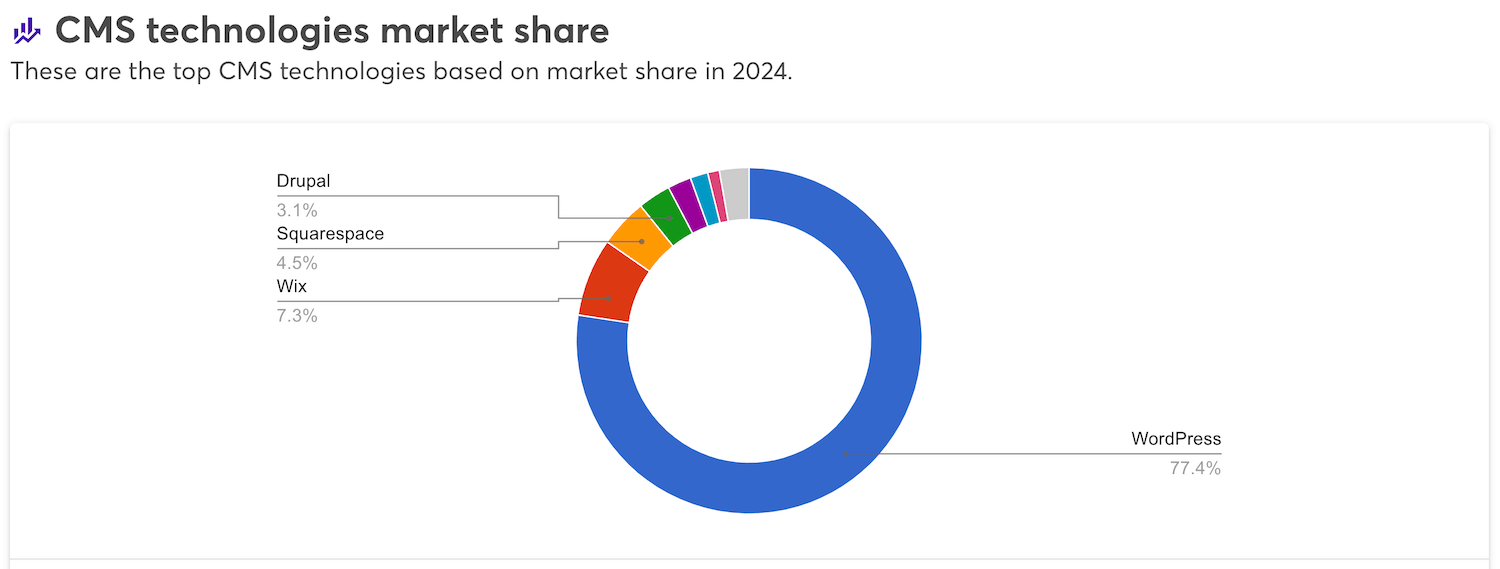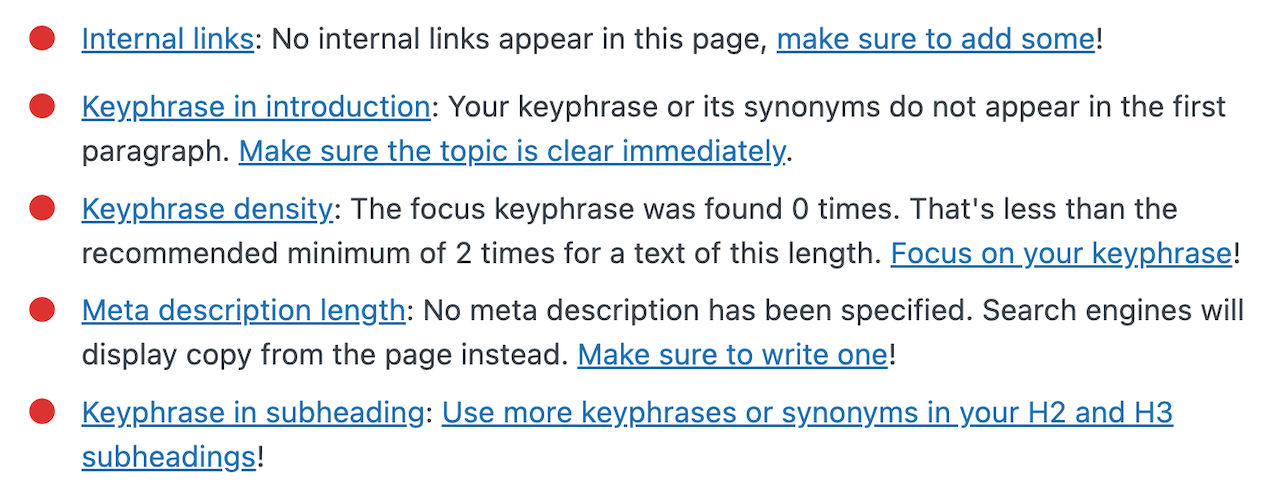Wappalyzer, which catalogs the technology stack of websites globally, provides some interesting statistics for Wix, Squarespace, and WordPress — specifically, the growth in adoption compared to aggregate traffic growth.
Why is website traffic significant? The right type of traffic and the proper conversion actions can mean either more sales leads or more customers — depending on the type of business.
Here is the relative market share of the top content management systems (CMS).

WordPress is still the clear leader, but Squarespace and Wix have had an uptick in adoption.
Usage & Traffic Trends
The following are charts of usage trends from 2020 to early 2024 for WordPress, Wix, and Squarespace.
WordPress Usage Trend
You can see from the following chart that the WordPress traffic trend is correlated with the usage trend.

Wix Usage Trend
According to Wappalyzer data, while Wix showed strong adoption growth during the period, the overall traffic to Wix sites has remained flat.

Squarespace Usage Trend
Squarespace also shows a flat traffic trend despite an increase in platform adoption.

Explaining the Differences
Why is the traffic growth for both Wix and Squarespace lagging well behind the increase in the number of websites relative to WordPress?
Here is speculation as to possible reasons.
The Average Company Size of Respective CMS Users
Wix and Squarespace are all-in-one solutions.
Their customers don’t need to think at all about hosting companies. Third-party software, such as themes and add-ins, plays a minor role. This is important because third-party apps can introduce ongoing maintenance needs.
Because of their low maintenance needs, these two CMSs may have been getting adopted by smaller companies compared to WordPress. Smaller companies, in turn, can mean websites with fewer pages.
With their excellent design tools, these platforms are sometimes chosen to create brochure websites — not for sites with concerted SEO efforts.
WordPress requires more technical administration than either Squarespace or Wix. Users must choose a hosting site such as WPEngine, Kinsta, or Siteground that is separate from the WordPress platform.
Many WordPress users install at least 10 of the over 59,000 available plugins. Manual intervention is sometimes needed for plugin updates and PHP updates.
Due to the need for ongoing maintenance, the average company size of a WordPress customer may be larger than that of a Squarespace or Wix customer.
Bigger companies mean more website pages and the ability to contract with or hire SEO experts, which adds up to more website traffic.
SEO Plugins For WordPress
Many WordPress customers install SEO plugins such as Yoast SEO or Rank Math.
Both of these plugins add a lot of SEO value to WordPress. For example, the plugins let authors know how well their content performs in terms of SEO and readability in real-time.
Yoast will downright nag you if you miss essential on-page and off-page elements from a page or post.

Both SEO plugins automatically add structured data to posts and pages.
Google PageSpeed
Wix and Squarespace sites tend to have PageSpeed scores in the “poor” zone – between 0 and 49 out of 100.
Because these are all-in-one platforms, an individual customer can do little to significantly improve their PageSpeed compared to other customers.
WordPress customers have a lot more individual control over PageSpeed. Each WordPress customer can turn its own speed dials. Dials include:
- The Web hosting plan
- The type of CDN
- Installation and configuration of optimization plugins
- The weight of the theme used
- Use or non-use of a page builder
A new WordPress site built using the WordPress block editor can achieve PageSpeed in the 90 – 100 “good” zone.
Faster PageSpeed may mean higher rankings and, therefore, more website traffic.
This is not to say that you can’t meet your website traffic goals with Squarespace or Wix. In the last two years, Wix has made significant SEO improvements.
However, neither of these platforms has Yoast to nag you about things like adding a meta description to your pages & posts or adding internal links.
